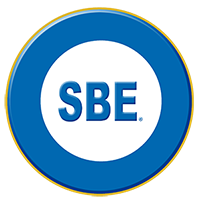The SBE’s often-stated concerns about increases in ambient noise, especially in the AM broadcast band, have received a response from the FCC. On June 15, 2016, the Commission issued public notice DA 16-676 announcing that its Technological Advisory Council (TAC), an FCC advisory group, will investigate changes and trends to the radio spectrum noise floor to determine if there is an increasing noise problem. If it finds that there is such an increasing problem, the TAC will investigate its scope and the quantitative evidence available. Initially, the FCC on behalf of the TAC is asking how a noise study should be performed.
Comments from the public are due by Aug. 11, 2016. The SBE will file comments prepared with the assistance of its Government Relations Committee and its Executive Committee.
The comments from the public are intended to help the TAC determine the scope of the study. The TAC will seek to determine changes to the spectrum noise floor over the past 20 years. It is not frequency-limited, though most of the complaints in SBE’s experience typically concern ambient, man-made noise in the medium-frequency, high-frequency and VHF bands. Noise in this context denotes unwanted radio frequency (RF) energy from man-made sources. The FCC Public Notice indicates that the expectation of the TAC is a finding that the noise floor in the radio spectrum is rising. This assumption is based on the fact that the number of unlicensed, intentional and unintentional RF radiators and industrial, scientific and medical devices in use that emit radio energy increase. However, FCC cites a dearth of what it terms “concrete evidence” of increased noise floors and a lack of quantitative data to support the presumption. The TAC asks for help in strategizing how the available data can be added to, in order to advise FCC.
In the SBE’s view, this study is long overdue. SBE General Counsel Chris Imlay says, “The FCC does not have a working knowledge of ambient RF levels in different environments and has not had such for years. Without this, it is impossible to know whether the Part 15 radiated and conducted emissions limits for intentional, unintentional and incidental radiators are adequate. Because FCC has neither the resources nor the inclination to address individual cases of interference attributable to, for example, RF devices, power lines, switching power supplies, RF lighting systems and the vast array of other noise contributors in the field, it is critical that ambient RF be regulated prior to the point of retail sale. The results of this study will clearly help evaluate the adequacy of the current Part 15 and Part 18 regulations.”
The TAC is asking a very wide-ranging series of specific and general questions and many sub-questions about how an ambient noise study should be conducted and how noise should be evaluated, including the following:
1. Is there a noise problem?
• If so, what are the expected major sources of noise that are of concern?
• What services are being most impacted by a rising spectrum noise floor?
2. Where does the problem exist?
• What frequency bands are of the most interest?
• In what environments?
3. Is there quantitative evidence of the overall increase in the noise floor across various segments of the radio frequency spectrum?
• At what levels does the noise floor cause harmful interference to particular radio services?
• What RF environment data from the past 20 years is available, showing the contribution of the major sources of noise?
4. How should a noise study be performed?
• Would receiver noise measurements commonly logged by certain users (e.g. radio astronomers, cellular, and broadcast auxiliary licensees) be available and useful for noise floor studies?
• How much data must be collected to reach a conclusion?
The broadcast engineering community is both uniquely affected by increases in ambient noise, and uniquely qualified to participate in this study. The geographic distribution of SBE members in all RF environments makes SBE an asset to the TAC in the conduct of this study. All broadcast licensees, especially AM broadcast licensees, have a stake in this study. SBE members with input on this subject are urged to contact the SBE Government Relations Committee with your thoughts on the issues listed in the public notice.

